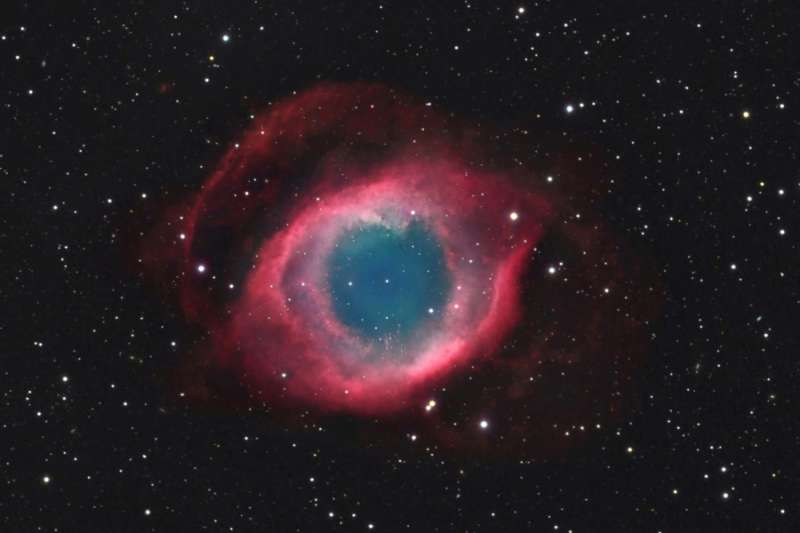Credit & Copyright: Ed Henry
(Hay Creek Observatory)
Explanation:
A mere seven hundred light years from Earth, in the constellation
Aquarius,
a sun-like star is dying.
Its last few thousand years have produced the
Helix
Nebula
(NGC 7293), a well studied and nearby example of a
Planetary
Nebula,
typical of this final phase of stellar evolution.
A total of 10 hours of exposure
time have gone in to creating this
remarkably deep
view of the nebula.
It shows details of the Helix's brighter
inner region, about 3
light-years across, but also follows fainter
outer halo
features that give the nebula a span of well over six light-years.
The white dot at the Helix's center is this Planetary Nebula's hot,
central star.
A simple looking nebula at first glance, the Helix
is now understood to have a surprisingly
complex geometry.
1999 2000 2001 2002 2003 2004 2005 2006 2007 2008 2009 2010 2011 2012 2013 2014 2015 2016 2017 2018 2019 2020 2021 2022 2023 2024 2025 |
Yanvar' Fevral' Mart Aprel' Mai Iyun' Iyul' Avgust Sentyabr' Oktyabr' Noyabr' Dekabr' |
NASA Web Site Statements, Warnings, and Disclaimers
NASA Official: Jay Norris. Specific rights apply.
A service of: LHEA at NASA / GSFC
& Michigan Tech. U.
|
Publikacii s klyuchevymi slovami:
NGC 7293 - Helix Nebula - planetary nebula - Tumannost' Ulitka - Planetarnaya tumannost'
Publikacii so slovami: NGC 7293 - Helix Nebula - planetary nebula - Tumannost' Ulitka - Planetarnaya tumannost' | |
Sm. takzhe:
Vse publikacii na tu zhe temu >> | |
